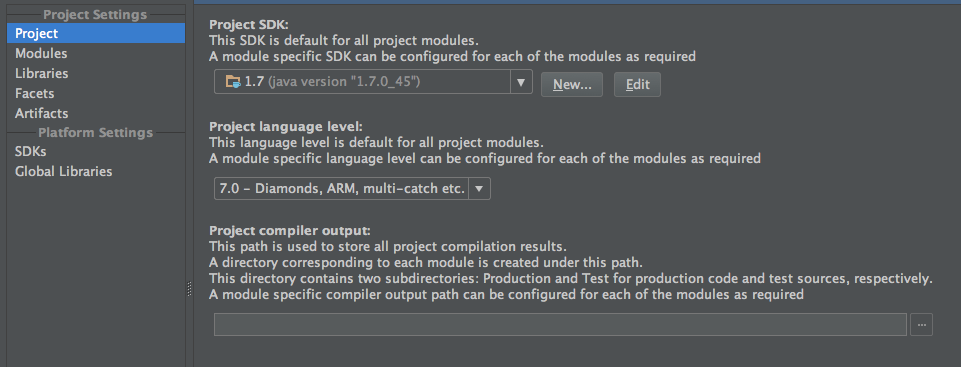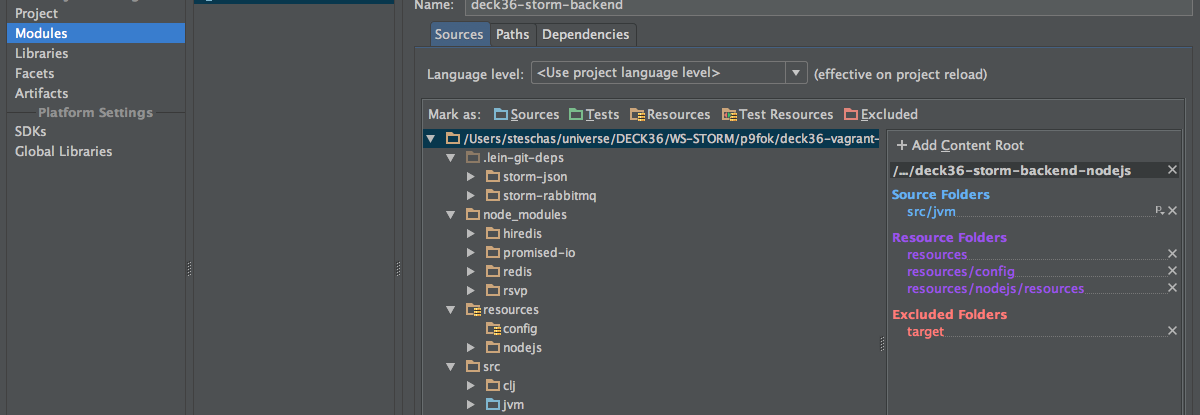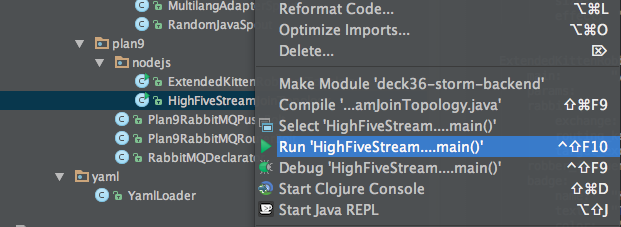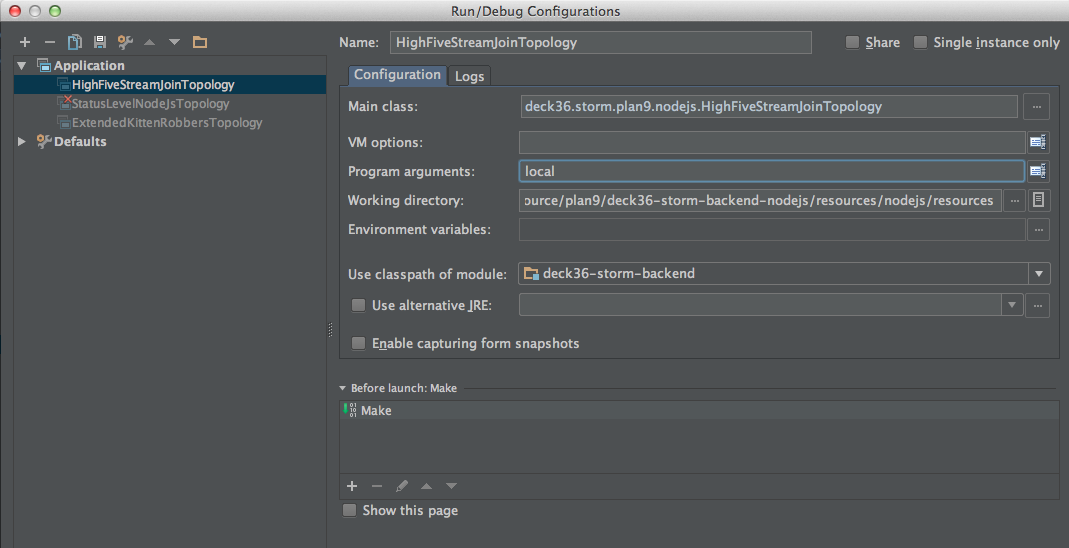# run within the Plan9 vagrant
./prepare.sh
2. Within the "deck36-api-backend" project, make sure, you created your production files in the target/resources directory.
# run within the Plan9 vagrant
./build.sh
The instructions provided here work with Intellij 13 Community Edition. IDE's other than Intellij are not supported at the moment. If you use an other IDE create a setup procedure, we appreciate your pull request.
In your local machine (not within the vagrant), go to the "deck36-storm-backend-nodejs" project. The ./prepare.sh script we executed within the vagrant already created IDEA project files. However, they lack local configuration for the maven repository, JDK/language settings, and project structure.
Set correct maven repository directory in IDEA .iml file. We provide the "patch_local_m2_dir.sh" script to automatically update the iml file. In the background, the vagrant mounts a local directory as its maven repository dir, so we have access to it.
# run in your local environment
./patch_local_m2_dir.sh
Start up Intellij and open the deck36-storm-backend-nodejs.ipr project file. Enter File->Project Structure and choose your JDK. A JDK version of 1.7+ is required. Increase the language level to at least 7.0.
In the same window of File->Project Structure, navigate to "Modules" under "Project Settings". Now configure the path structure: Add "src/jvm" as "source directory". Remove "src" as "source" directory. Add "resources/config" as "resources" directory. The other settings in the screenshot are optinal.
In the project tree viewer, navigate to the HighFiveStreamJoinTopology, activate the context menu and choose "run". This will create a configuration to run that particular class. The execution will abort with an error regarding missing command line parameters.
Configure the command line parameters for executing the topology. Enter Run->Edit Configurations and set "Program arguments" to "local".
In our vagrant enviroment, Storm is installed in /opt/storm. We can thus execute the topology locally by:
/opt/storm/bin/storm jar target/deck36-storm-backend-nodejs-0.0.1-SNAPSHOT-standalone.jar deck36.storm.plan9.nodejs.HighFiveStreamJoinTopology dev
Note: To run the topology in dev mode within the vagrant, make sure your node binary and javascript paths in the yaml files (see resources/config) are correct and don't differ due to your local development machine setup.
Deploying to a cluster is very simple as well, because all the cluster config is handled by the storm command. We thus just need to switch dev to prod:
/opt/storm/bin/storm jar target/deck36-storm-backend-nodejs-0.0.1-SNAPSHOT-standalone.jar deck36.storm.plan9.nodejs.HighFiveStreamJoinTopology prod
The updates of user generated points and respective status levels are managed by a PHP bolt that is able to use the data entities defined in the PHP project. In order to focus on the Node.js part here, we provide a pre-built jar file with that functionality. In order to play Plan9, deploy that the StatusLevelTopology to the cluster:
/opt/storm/bin/storm jar resources/deck36-storm-backend-0.0.1-SNAPSHOT-standalone.jar deck36.storm.plan9.StatusLevelTopology prod



